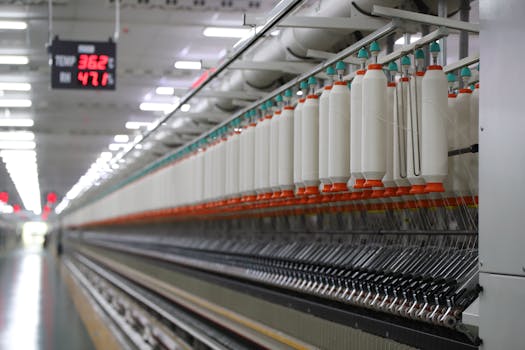
From Cotton to Innovation: How African Fiber Companies are Transforming Textiles
From Cotton to Innovation: How African Fiber Companies are Transforming Textiles is a story of resilience, innovation, and transformation. The African continent has long been known for its rich textile heritage, with countries like Egypt, Morocco, and South Africa producing high-quality fabrics and garments for centuries. However, in recent years, the textile industry in Africa has undergone a significant transformation, driven by the emergence of innovative fiber companies that are changing the face of the industry.
These companies are leveraging cutting-edge technology, sustainable practices, and creative approaches to produce unique and high-quality fibers, fabrics, and products that are gaining international recognition. From cotton to innovation, the journey of African fiber companies is a testament to the continent’s potential for growth, entrepreneurship, and creative expression.
Section 1: The Rise of African Fiber Companies
The rise of African fiber companies can be attributed to a combination of factors, including government support, investment in infrastructure, and a growing demand for sustainable and eco-friendly products. Many African countries have implemented policies and initiatives to promote the development of the textile industry, such as tax incentives, training programs, and investments in technology and machinery.
For example, the Ethiopian government has established the Ethiopian Textile Industry Development Institute, which provides training and support to textile manufacturers, while the South African government has launched the textile and apparel Competitiveness Improvement Program, which aims to enhance the competitiveness of the industry through technology upgrading and skills development.
Section 2: Innovative Approaches to Sustainability
African fiber companies are at the forefront of innovation, using sustainable approaches to produce high-quality fibers and fabrics. One such approach is the use of organic cotton, which is grown without the use of toxic pesticides or synthetic fertilizers. Organic cotton is not only better for the environment, but it is also gentler on the skin and has a softer texture.
Another innovative approach is the use of recycled materials, such as plastic waste, to produce fibers and fabrics. This approach not only reduces waste but also helps to conserve natural resources. For example, the South African company, Mtanda Textiles, uses recycled plastic waste to produce a range of fabrics, including polyester and nylon.
Section 3: Transforming Cotton into High-Quality Fabrics
African fiber companies are also transforming cotton into high-quality fabrics and products, using advanced technology and traditional techniques. For example, the Egyptian company, Kayan Textiles, uses a combination of modern machinery and traditional weaving techniques to produce high-quality cotton fabrics, including denim, twill, and velvet.
Another example is the Moroccan company, Aziz Textiles, which produces a range of cotton fabrics, including printed and embroidered fabrics, using traditional techniques and natural dyes. These companies are not only producing high-quality fabrics but also creating jobs and promoting economic growth in their communities.
Section 4: Conclusion and Future Outlook
In conclusion, the journey of African fiber companies from cotton to innovation is a testament to the continent’s potential for growth, entrepreneurship, and creative expression. These companies are leveraging cutting-edge technology, sustainable practices, and creative approaches to produce unique and high-quality fibers, fabrics, and products that are gaining international recognition.
As the textile industry in Africa continues to evolve, it is likely that we will see more innovative approaches to sustainability, more investments in infrastructure and technology, and more opportunities for entrepreneurs and small-scale producers to enter the market. The future of the textile industry in Africa is bright, and it will be exciting to see how African fiber companies continue to transform and innovate in the years to come.

